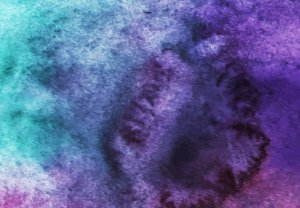 It has been raining all morning. Unfortunately, this means it is a gym day as opposed to an outside run day for me. Gym days are less exciting for a few reasons, but the main reason for me is boredom. When I arrived at the gym today, I opted to use the elliptical machine instead of the treadmill. Two tricks that I discovered to keep myself more entertained on the elliptical are listening to music and using the reverse mode on the machine. The change in direction from forward to backward and then forward again keeps me engaged.
It has been raining all morning. Unfortunately, this means it is a gym day as opposed to an outside run day for me. Gym days are less exciting for a few reasons, but the main reason for me is boredom. When I arrived at the gym today, I opted to use the elliptical machine instead of the treadmill. Two tricks that I discovered to keep myself more entertained on the elliptical are listening to music and using the reverse mode on the machine. The change in direction from forward to backward and then forward again keeps me engaged.
In my art, I also get into a rut due to boredom and it’s hard to break out of it sometimes, particularly when painting alone. But here are some techniques I utilize to combat the issue and keep my painting process interesting:
- Paint with your eyes closed
You can do this by just closing your eyes or by using a blindfold. Make sure to set up your workspace and know where all of your materials are before closing your eyes. You may want to set a timer for two minutes to allot yourself a specific time frame. You can try different techniques with your eyes closed like thinking of a memory and painting/drawing, or if you’re listening to music, trying to paint/draw to the beat. - Work on more than one art creation at a time
When I leave a piece of good paper next to me and use it as I would scrap paper, this sheet can sometimes become more interesting than the piece I am working on. I may use the sheet of paper for wiping off extra paint or drawing a quick sketch. Then after a while, I may notice that the “scrap” paper has more energy than my actual piece (where my focus is often on fully integrating colors and shapes, a process that can sometimes result in a loss of energy). When that happens, I like to try finishing the artwork that started as scrap, just as I would a regular piece. Try applying this approach to your artwork in whatever way makes sense for your medium. - Flip your substrate upside down
Rotating your canvas or paper will help you see the basic shapes in your work. Once you see these shapes, make sure your piece still works from each perspective of your rotation. Can your eye still easily move around the canvas, or does it get cut off? - Switch hands
Try painting or drawing with your other hand for a timed segment. Try making small movements followed by loose, large movements with your painting/drawing instrument. How does it feel? - Exchange your art with another artist. Work in rotation on the same piece.
I worked on my first collaborative piece two years ago. It was for an art show where you could only enter if the piece was collaborative. An artist friend and I exchanged the painting about once a week. We each did whatever we wanted to the painting and stopped exchanging it after we both felt it was complete. The painting sold within a month of completion and we split the profit.
What tips or tricks do you have to energize your art and get out of a rut? Did you try any of the suggestions that I listed? If so, how did they work for you? For other ways to spice up your art, try my 7 Day Creative Challenge!
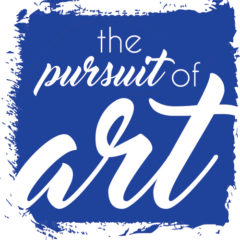
 One day it hit me that EVERY person is slower than someone else. In order to stay with my training, I had to focus on myself and not on how my pace was over 15 minutes per mile. By showing up every training day and acknowledging my small achievements along the way, I was able to continue on the journey I started. I allowed myself to feel proud when I completed my first 5K race with a PR of just under a 13 minute mile.
One day it hit me that EVERY person is slower than someone else. In order to stay with my training, I had to focus on myself and not on how my pace was over 15 minutes per mile. By showing up every training day and acknowledging my small achievements along the way, I was able to continue on the journey I started. I allowed myself to feel proud when I completed my first 5K race with a PR of just under a 13 minute mile.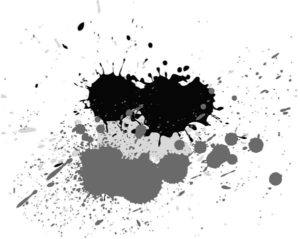
![By Ellywa (Own work) [CC BY-SA 4.0 (http://creativecommons.org/licenses/by-sa/4.0)], via Wikimedia Commons](http://www.thepursuitofart.com/wp-content/uploads/2017/01/Contrast_of_complementary_colors.jpg)
 So, you have been pursuing your art for a long time now. Or, maybe you have just started. Either way, you have a passion for creating. And now the world needs to see it!
So, you have been pursuing your art for a long time now. Or, maybe you have just started. Either way, you have a passion for creating. And now the world needs to see it!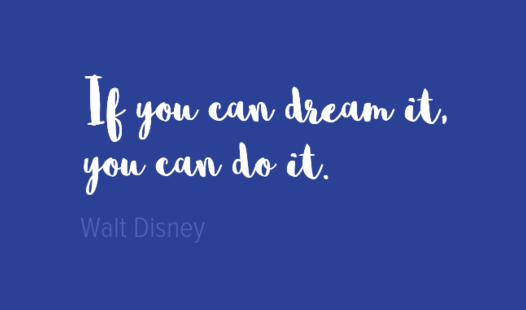
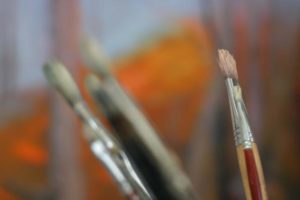 Before you begin, be sure to wear comfortable clothing that is non-constricting — items that you don’t care about getting dirty (I have a few designated outfits just for my art). You’ll also want to have all your supplies set up ahead of time. Trust me, once your creative flow is in motion, you won’t want to stop to find that paintbrush you just purchased last week.
Before you begin, be sure to wear comfortable clothing that is non-constricting — items that you don’t care about getting dirty (I have a few designated outfits just for my art). You’ll also want to have all your supplies set up ahead of time. Trust me, once your creative flow is in motion, you won’t want to stop to find that paintbrush you just purchased last week.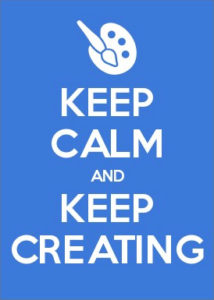 2. Be social.
2. Be social.